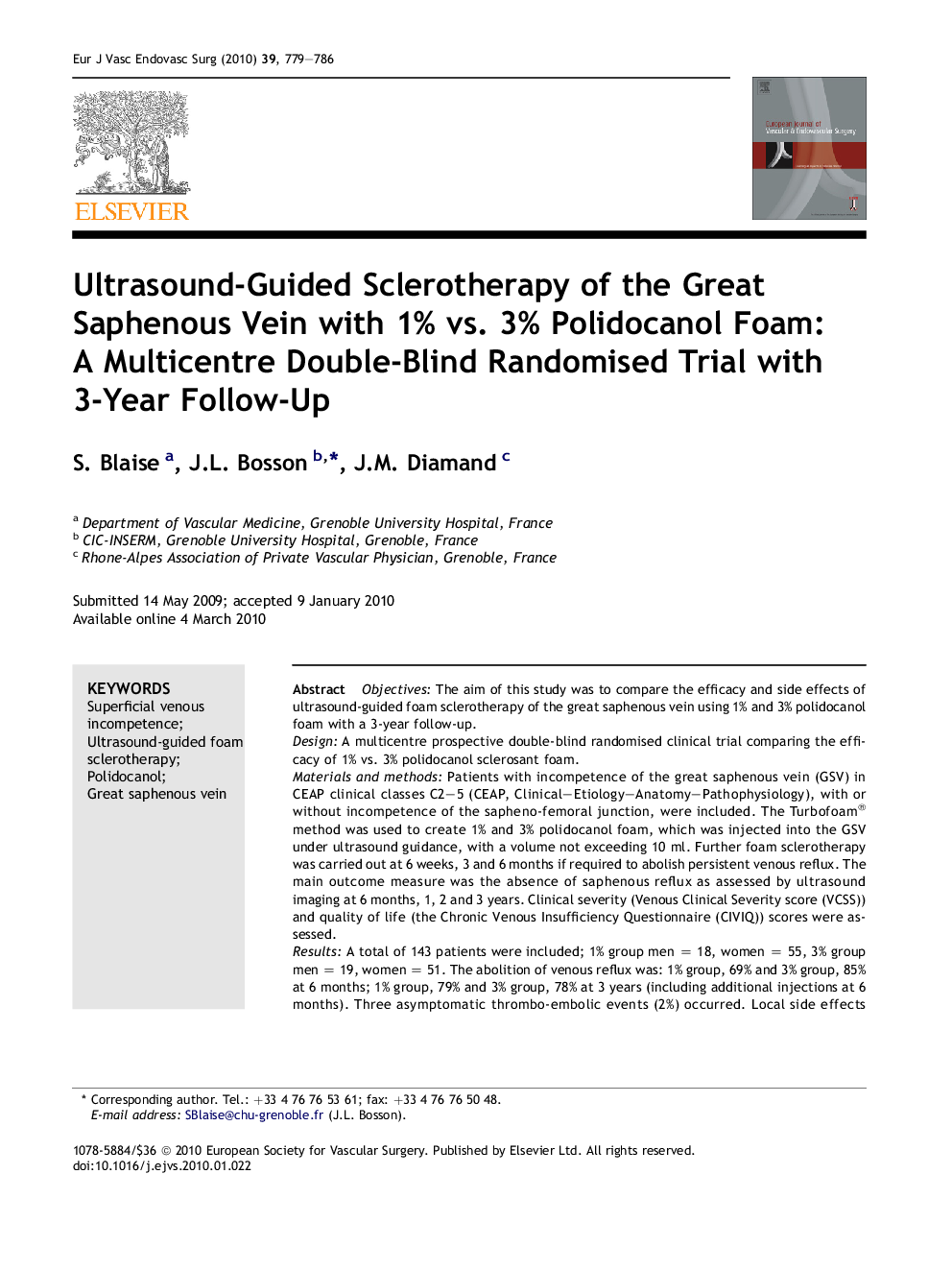| کد مقاله | کد نشریه | سال انتشار | مقاله انگلیسی | نسخه تمام متن |
|---|---|---|---|---|
| 2914301 | 1575504 | 2010 | 8 صفحه PDF | دانلود رایگان |

ObjectivesThe aim of this study was to compare the efficacy and side effects of ultrasound-guided foam sclerotherapy of the great saphenous vein using 1% and 3% polidocanol foam with a 3-year follow-up.DesignA multicentre prospective double-blind randomised clinical trial comparing the efficacy of 1% vs. 3% polidocanol sclerosant foam.Materials and methodsPatients with incompetence of the great saphenous vein (GSV) in CEAP clinical classes C2–5 (CEAP, Clinical–Etiology–Anatomy–Pathophysiology), with or without incompetence of the sapheno-femoral junction, were included. The Turbofoam® method was used to create 1% and 3% polidocanol foam, which was injected into the GSV under ultrasound guidance, with a volume not exceeding 10 ml. Further foam sclerotherapy was carried out at 6 weeks, 3 and 6 months if required to abolish persistent venous reflux. The main outcome measure was the absence of saphenous reflux as assessed by ultrasound imaging at 6 months, 1, 2 and 3 years. Clinical severity (Venous Clinical Severity score (VCSS)) and quality of life (the Chronic Venous Insufficiency Questionnaire (CIVIQ)) scores were assessed.ResultsA total of 143 patients were included; 1% group men = 18, women = 55, 3% group men = 19, women = 51. The abolition of venous reflux was: 1% group, 69% and 3% group, 85% at 6 months; 1% group, 79% and 3% group, 78% at 3 years (including additional injections at 6 months). Three asymptomatic thrombo-embolic events (2%) occurred. Local side effects (principally pigmentation and matting) were 9% in the 3% group and 6% in the 1% group at 3 years (N.S.). Clinical severity and quality of life scores improved by more than 20% at 6 months in both the groups, with no difference between the groups.ConclusionsThis is the first randomised clinical trial of ultrasound-guided foam sclerotherapy which is a 3-year follow-up and shows equivalent efficacy of 1% and 3% sclerosant foam.Clinical trial registration number: 2006-07-05.
Journal: European Journal of Vascular and Endovascular Surgery - Volume 39, Issue 6, June 2010, Pages 779–786